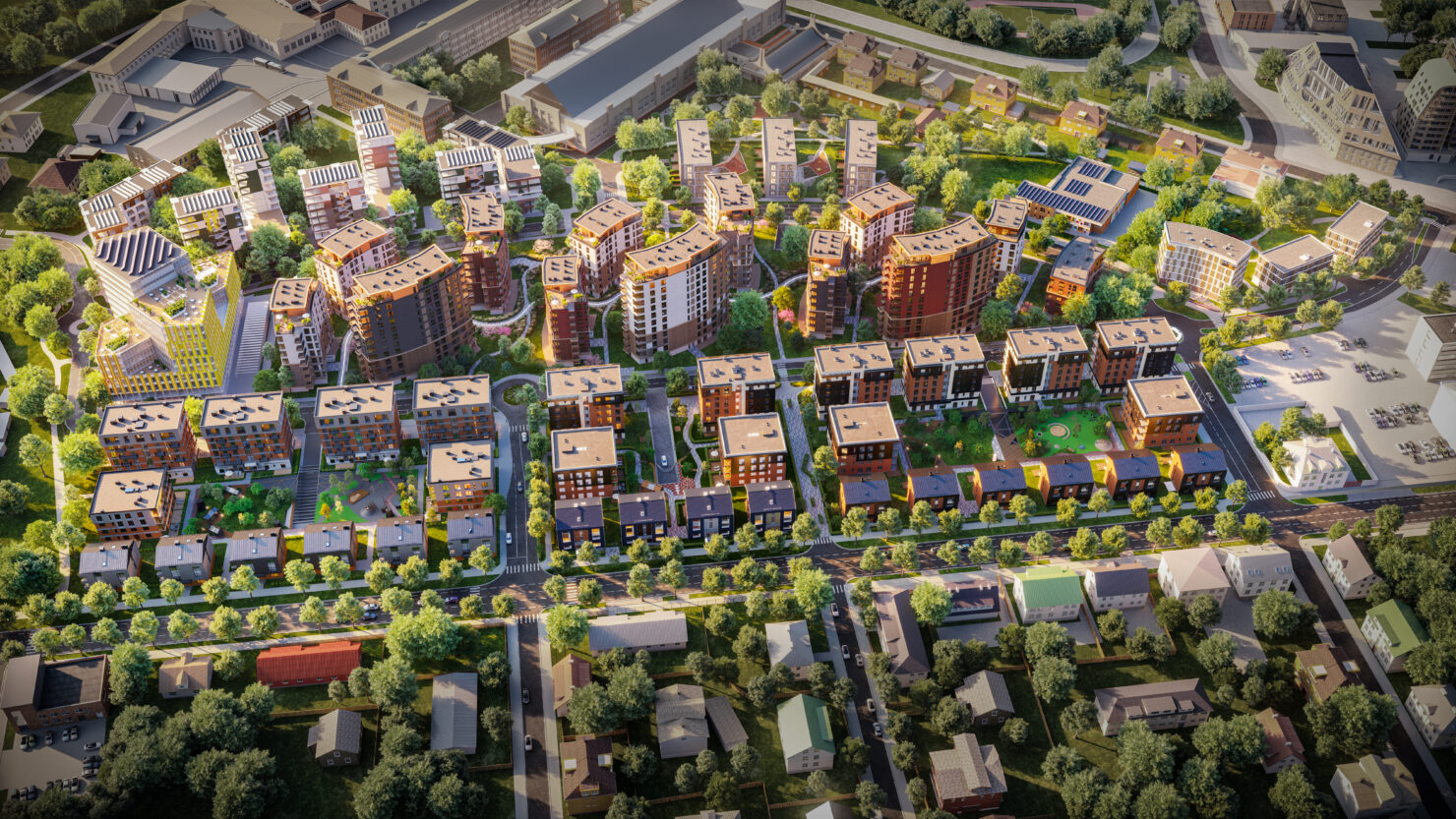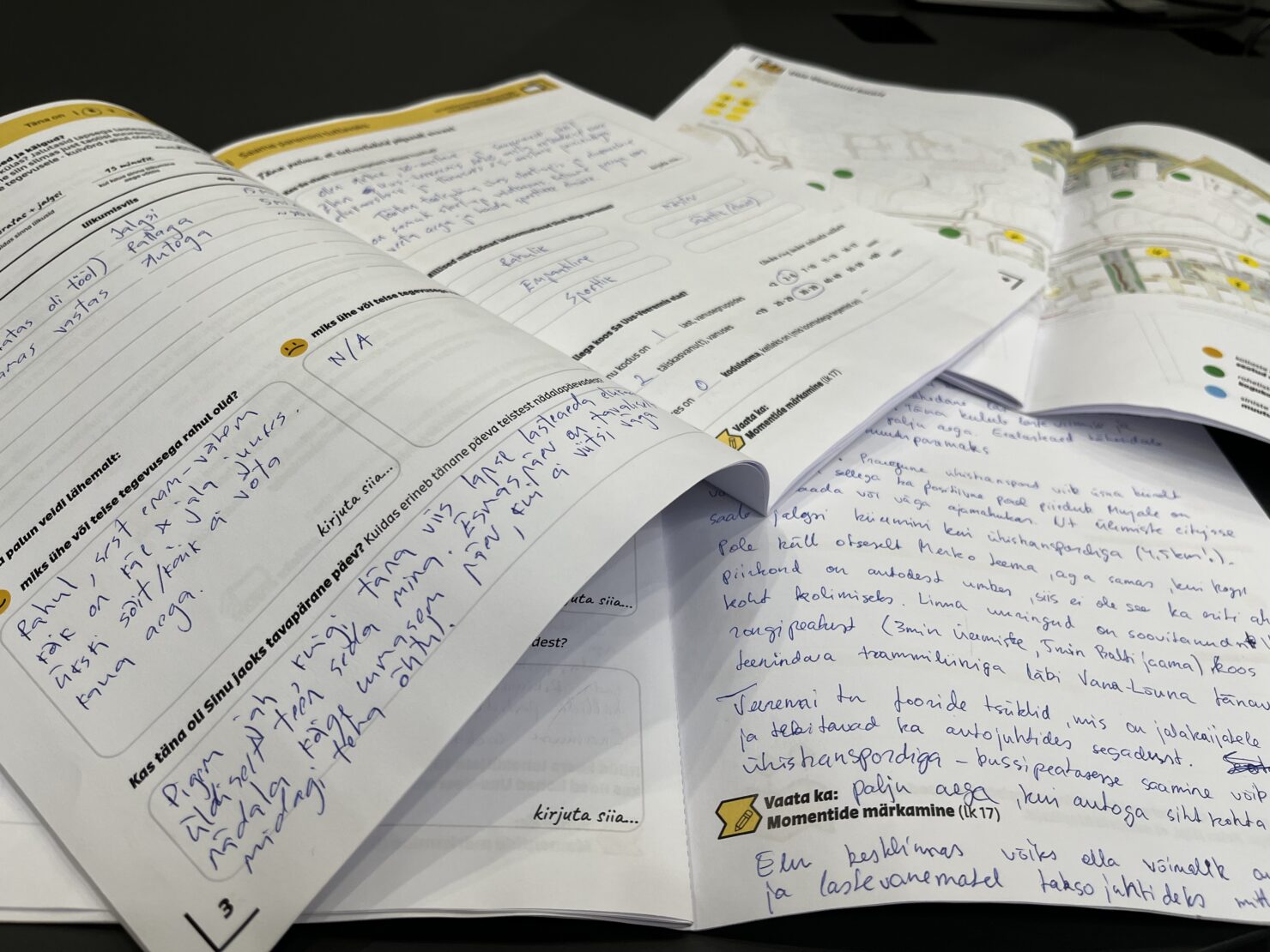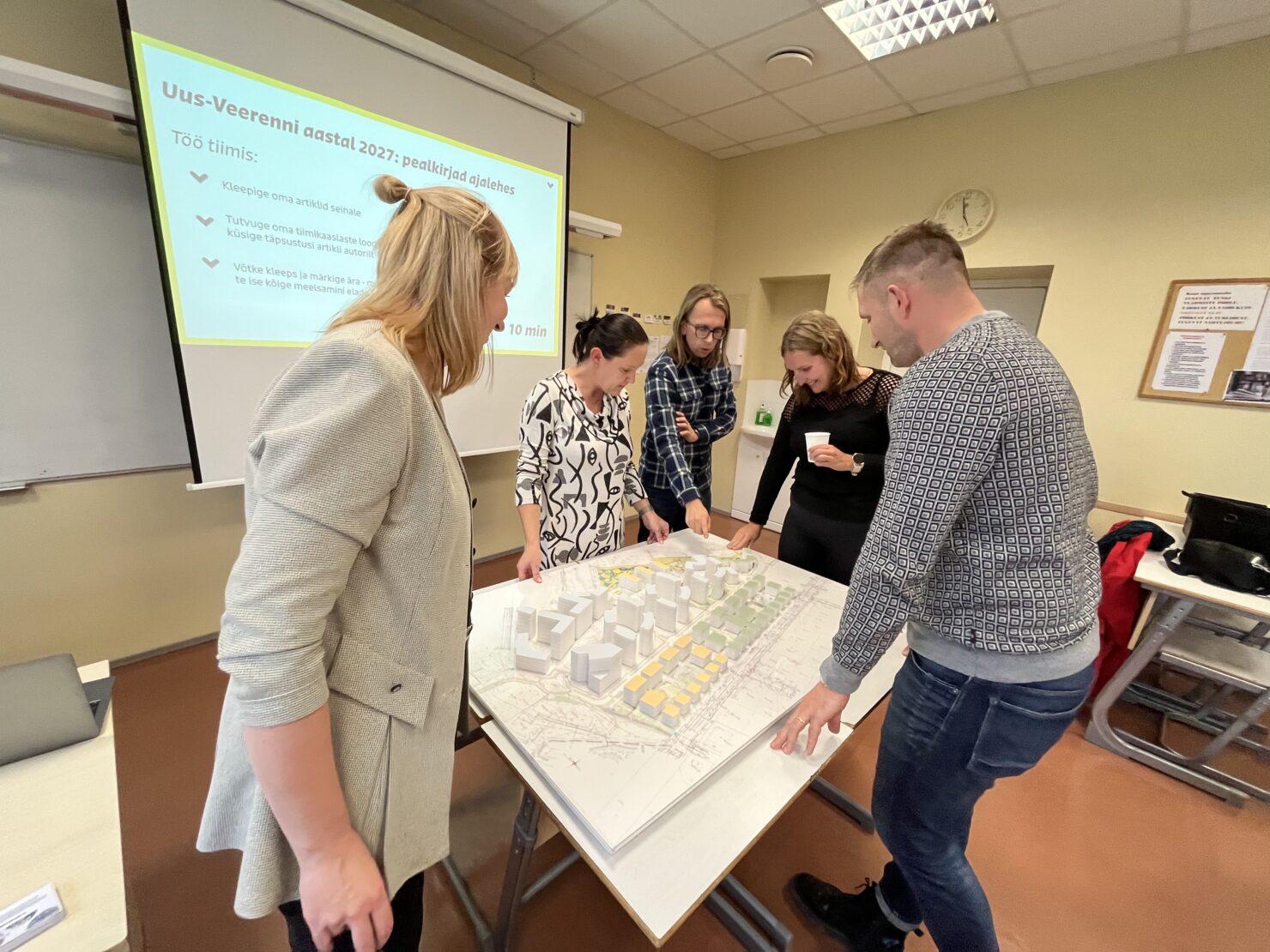2023 | MerkoStrategicService DesignUser Research
Merko – developing human-centered neighbourhoods

Successful real estate developers cannot rely on just building great houses anymore. Next-generation residential developers are creating human-centered communities and putting liveability at the heart of their work through designing spaces where people can live healthy, communal and fulfilling lives.
Merko, Estonia’s most reputable real estate developer, had understood, that building the best houses in Estonia is not enough. They needed to find out and understand better, how people are actually living in their developments – what they value and what is missing – in order to make more informed human-centered strategic decisions in their business and support the growth of communities and neighborhoods.
Merko invited Velvet out on a research quest and our common goal was to understand the current living experience and possible future needs of people in one of their ongoing developments – Uus-Veerenni residential quarter in Tallinn, Estonia.

The Work
To understand the experience of Uus-Veerenni residents we needed to get close to the people and their everyday lives. We started our ethnographic research journey by walking around in the neighborhood and observing the environment, the people, the interactions, the use of public spaces and services, the overall rhythm of life in Uus-Veerenni. Next to our own individual observations we also had a tour of the area through the eyes of the developer as well as through the eyes of a local family.
Our preliminary findings, combined with inspiring insights from a thorough trend research on the future of urban planning and residential development, led us to go more in depth with our user research and focus more on topics from neighbors and community to accessibility and sustainability.
We met with eight different people, who live in Uus-Veerenni and each person walked us around in the neighborhood and shared insights into their everyday lives, ideal homes, things they enjoy and things they would like to change in the neighborhood, etc. These contextual one-on-one interviews gave us great insights into what people truly value when it comes to their home, surrounding community and public space.
The Merko diaries aka what are cultural probes
But interviews weren’t enough to understand people’s everyday lives – we needed to map people’s regular tasks and amenities they need to use and how accessible those are.
Unfortunately we couldn’t immerse ourselves in their actual lives to follow them around 24/7, but we used a tool called cultural probes that allowed us a more in-depth sneak peek into peoples daily activities.
We created Uus-Veerenni physical, pen-and-paper diaries, which were then filled in by eight different residents of Uus-Veerenni during a seven day period.

The diary consisted of various tasks that were prepared on the basis of all our previous research (interviews, trends, observations, desktop research). And one of the central tasks was for all the participants to map out every day all the daily activities outside of their homes. Where do they need to go, which services they need to use, how do they travel to those places: by car, on foot, by bike etc., how long does it take them and how do they feel about all of this.
Other tasks focused on e.g observations and changes of the neighborhood, analysing the community and visualising what their ideal home looks and feels like. The insights people shared in their diaries were really valuable in highlighting the possible opportunity areas for Merko to work together with the community to make the neighborhood even better.

As a final step in our user research journey we organised a co-design session for the residents, representatives from Merko as well as our own designers from Velvet to think and dream about Uus-Veerenni together based on all our previous findings and insights. The purpose of this session was to shape the possible futures of Uus-Veerenni: in which direction the quarter could develop and what kind of activities could be necessary to move towards the goal.
The outcome
As a result of this work, we uncovered some focus areas in order to create an even greater living experience for the residents of Uus-Veerenni or in other future residential developments:
- Connected and caring community – creating affordable opportunities for residents to connect, engage and raise awareness, which as a catalyst would contribute to the development of a vibrant community
- Garden-city lifestyle and environment – a peaceful and safe atmosphere that is pedestrian-oriented, green, friendly to people of all ages. Everything you need for life is within a 15-minute radius, and a car is not a primary need.
- Balanced public and private space – providing equal opportunities through the creation of space with different levels of privacy in the quarter and a public space that is multi-purpose and offers various opportunities for leisure activities for every age group.
- Services that support community development – service providers and businesses that connect the community and the identity of the neighborhood as well as the local needs and values.
These valuable user insights help to move firmly toward more human-centered residential design, engage residents in community building and make informed strategic decisions in their business development.
Based on the research, Velvet and Merko are continuing the collaboration to bring a more human-centered Uus-Veerenni neighborhood to life.
Team
- Kristian Kirsfeldt – Design lead
- Hanna-Stella Haaristo – Design research
- Klarika Mäeots Uustal – Service design
- Kristiina Veerde-Toompalu – Producer
- Helen Küppas – Producer
- Mart Lankots – Account manager
Partners
- Merko: Alar Toomik, Kätlin Kaasik, Merit Kullasepp, Eve Soppe – Client